Samsung TVs‘ AU series is a product line of Crystal UHD TVs. And the one thing that sets this series apart is the classic technology screens. In general, both lines of TVs can be attributed to the medium-high class. In short, the two lines have more in common than differences. Whichever one you choose, you’ll get good picture quality for a relatively fair price. However, it’s still not a high-end TV, so the sound quality will be good but not excellent.
Also, don’t forget that TVs of the AU series may be equipped with third-party screens.
Which Crystal UHD TV is better: Samsung TV AU7000 vs AU8000
Choosing a TV set today is becoming a very difficult task. Having a TV in the living room has long been commonplace for all of us. It’s where you can get together with friends visiting or with your family and watch your favorite shows, play games, or, for example, play videos from your vacation.
Since TV today can be found in every home, it isn’t surprising that the manufacturers’ market was formed quite a big competition.
Today there are hundreds of different manufacturers and models of TVs. Some are more luxurious and expensive, while others are devices everyone can afford. One of the most reliable TV companies in the world is Samsung. This company has been in this market for quite some time and has proven to be a manufacturer of quality devices. In addition, Samsung TVs often have pretty exciting and unique features, such as the Multi View function.
However, even if you have already decided on the exact brand of your TV, the question is still relevant, what model should you choose? Will it be a very expensive TV with a bunch of different functions or a cheaper model that will just do its job well without any additional features?
Today we are comparing two very similar TV models Samsung TV AU7000 vs AU8000.
Read also:
- How to use Remote Access on your Samsung Smart TV
- How to turn off ads on Samsung TV
- Samsung QN85B vs QN85A short review
Samsung AU7000 vs AU8000 brief description
Depending on the country the TV is made for, the model number of the TV may differ slightly.
In Europe, for example, there is AU8079, AU7199, and AU7100. Such TVs (AU7000 and AU8000) have an entry-level MediaTek 4K processor with a maximum 60 Hz frame rate. However, Samsung names such processors – as Crystal Processor 4K. However, don’t forget what I just told you above: a MediaTek processor.
Now, let’s talk about the display. Both lines have a display made with VA technology and EDGE backlighting, which means that the dimming technology is only possible in large areas. It also supports 10-bit color depth and uses dithering technology to increase the number of shades. To be fair, if we speak about your accurate perception, the TV screen only supports a color depth of 8 bits (at least it seems like this).
And briefly about OS. There’s Tizen 6.0, the latest version of this OS for 2021. But keep in mind that versions of the OS may have slight differences for different regions. When choosing a TV model, better read to read tech specs on the regional Samsung website.
Samsung TV AU8000 vs AU7000 differences
Now, let’s consider the TVs’ differences in tech specs.
First, they use different motherboards and processors, but Samsung doesn’t disclose detailed information. However, we can understand this through the different number of USB ports, which usually means using different components.
Visually, the AU7000 series TV will be slightly slower than the AU8000 TV. But these are similar TVs if you’re not critical about responsiveness to commands. Samsung uses PQI (Picture Quality Index) in some areas. Of course, this score is higher on the AU8000 series TVs.
But no one knows how Samsung calculates this index; you should know that PQI is a very synthetical index. Since these are mid-level TVs, they usually only work with standard remote controls. Since the TV is Bluetooth, it’s technically ready to work with a smart remote.
For example, in Germany, these TVs usually work with Smart Remotes. In the service menu, at the software level, there is an option that allows you to control whether or not the TV can work with the Smart remote control.
You can compare the tech specs of the TVs in more detail in the table. Note that, depending on the country, some technical features, especially those controlled at the software level, may slightly differ.
| AU8000 (2021) | AU7000 (2021) | |
|---|---|---|
| screen | ||
| Screen Size | 43, 50, 55, 65, 70, 75, 85 | 43, 50, 55, 58, 65, 75 |
| Style | Flat Panel | Flat Panel |
| Resolution | 3,840 x 2,160 | 3,840 x 2,160 |
| screen bit | 10bit (8 bit+FRC) | 10bit (8 bit+FRC) |
| type screnn | Crystal UHD | Crystal UHD |
| screen technology | VA | VA |
| Backlighting | EDGE Led | EDGE Led |
| Dimming Technology | UHD Dimming | UHD Dimming |
| Stand Type (Color) | Black | TITAN GRAY |
| Bezel Width | 3 Bezel-less | 3 Bezel-less |
| Video | ||
| Motion Rate | 120 | 120 |
| refresh rate | 60 | 60 |
| PQI (Picture Quality Index) | 2200 | 2000 |
| Color | Dynamic Crystal Color | Pur Color |
| Contrast | Mega Contrast | Mega Contrast |
| HDR (High-Dynamic Range) | HLG, HDR10+ | HLG, HDR10+ |
| Picture Engine | Crystal Processor 4K | Crystal Processor 4K |
| Audio | ||
| Dolby | Yes | Yes |
| Sound Output | 20W | 20W |
| Woofer | No | No |
| Speaker Type | 2CH | 2CH |
| Object Tracking Sound | Yes lite | No |
| Q-Symphony | Yes | Yes |
| Multiroom Link | Yes | Yes |
| Features | ||
| OS | Tizen 6.0 | Tizen 6.0 |
| Wi-Fi | Yes WiFi 5 | Yes WiFi 5 |
| Bluetooth | Yes (ver.4.2) | Yes (ver.4.2) |
| Smart Hub | Yes | Yes |
| Samsung Health | Yes | No |
| Bixby | Yes | No |
| Film Mode | Yes | Yes |
| LED Clear Motion | Yes | No |
| Natural Mode Support | Yes | Yes |
| Motion Technology | Motion Xcelerator | Yes |
| 360 Video Player | No | No |
| 360 Camera Support | No | No |
| Easy Setup | Yes | Yes |
| App Casting | Yes | Yes |
| Wireless TV On - Samsung WOW | Yes | Yes |
| Wired TV On - Samsung WOL | Yes | Yes |
| Digital Clean View | Yes | Yes |
| Ultra Black | No | No |
| ConnectShare | Yes | Yes |
| Closed Captioning | Yes | Yes |
| Game Mode | No | No |
| Eco Sensor | Yes | Yes |
| Mobile to TV - Mirroring, DLNA | Yes | Yes |
| Google Assistant | Yes | Yes |
| Alexa | Yes | Yes |
| SmartThings App Support | Yes | Yes |
| SmartThings | Yes | Yes |
| Far-Field Voice Interaction | No | No |
| TV Plus | Yes | Yes |
| Web Browser | Yes | Yes |
| Gallery | Yes | Yes |
| EPG | Yes | Yes |
| FreeSync | No | No |
| Filmmaker Mode | Yes | Yes |
| IP Control | Yes | Yes |
| BT HID Support | Yes | Yes |
| MBR Support | Yes | Yes |
| IPv6 Support | Yes | Yes |
| Tap View | Yes | Yes |
| Auto Game Mode (ALLM) | Yes | No |
| Wireless Dex | Yes | No |
| Cloud Service | Office 365 | Office 365 |
| Multi View | No | No |
| Game Motion Plus | No | No |
| Dynamic Black EQ | No | No |
| Super Ultra Wide Game View | No | No |
| Game bar | No | No |
| Expert Calibration | No | No |
| Auto Channel Search | Yes | Yes |
| InstaPort S (HDMI Quick Switch) | Yes | Yes |
| Channel Guide | No | No |
| Ambient Mode | No | No |
| Auto Power Off | Yes | Yes |
| AI Technology | ? | ? |
| Auto Motion Plus | Yes | Yes |
| Embedded POP | No | No |
| Anynet+ (HDMI-CEC) | Yes | Yes |
| V-Chip | Yes only US | Yes only US |
| TV to Mobile - Mirroring | No | No |
| USB HID Support | Yes | Yes |
| AI Upscale | Yes | Yes |
| Easy Pairing | No | No |
| Inputs & Outputs | ||
| HDMI | 3 | 3 |
| USB | 2 | 1 |
| Ethernet | Yes | Yes |
| RF In (Terrestrial/Cable | Yes | Yes |
| RF In (Satellite Input) | Yes Europe, No US | Yes Europe, No US |
| Digital Audio Out (Optical) | Yes | Yes |
| Audio Return Channel Support | No | No |
| eARC | Yes | Yes |
| One Connect | No | No |
| Samsung OneRemote | Yes | Yes |
| System | ||
| Digital Broadcasting | ATSC/ClearQAM US, DVB Europe | ATSC/ClearQAM US, DVB Europe |
| Analog Tuner | Yes | Yes |
| Accessories | ||
| Remote control | TM2180A | TM2180A, TM2140A |
| --- |
What are the most critical differences?
If we go deeper into their technical specifications, you may notice that the two TVs are very similar and do not have many differences. The AU8000 will have a slightly better picture, as Samsung claims it has better color fidelity and a more comprehensive color range.
However, they have the same viewing angles and refresh rate, virtually the same sound system, and the same input and output sets.
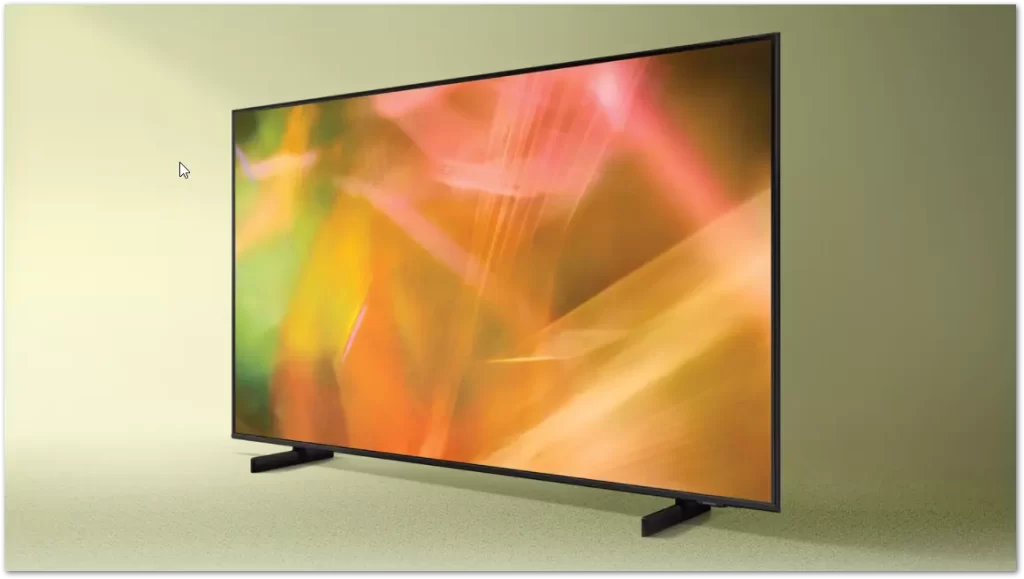
Since the AU8000 is an 8th generation TV and the AU7000 is a 7th generation TV, the differences will be accordingly. This means they are similar in features, but AU8000 is more advanced in software.
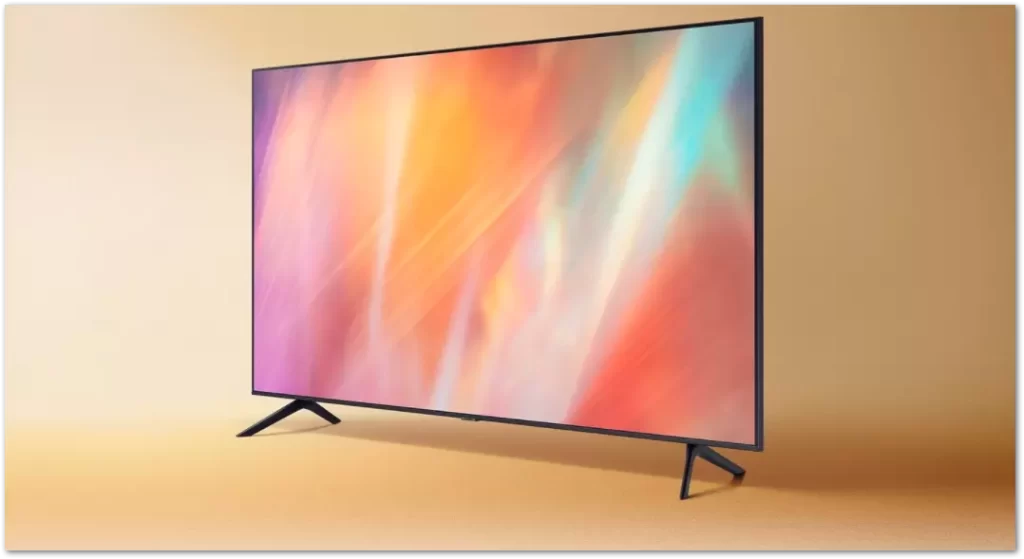
The Tizen 6 operating system controls both TVs. This operating system is found in most Samsung Smart TVs. It works pretty quickly, but like any system, needs constant updates. In the case of our TVs, AU8000 has many features in its system due to the support of voice assistant Bixby. It’s a handy feature that can make your life easier if you constantly use the built-in programs in Tizen on your smart TV.
What about the remotes
If you have carefully studied the technical features, you might have noticed that the two TVs differ in their remote controls. In the case of the AU8000, it’s the TM2180A, and in the case of the AU7000, it’s the TM2140A. The TM2180A will also be backward compatible with the AU7000.
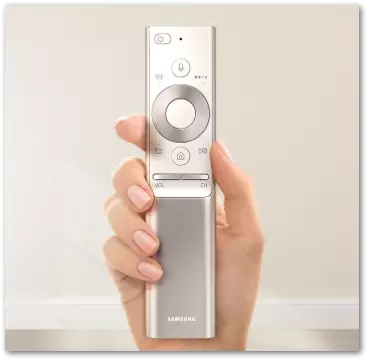
So what’s the difference between these two models? It’s quite simple. These are two models of the Samsung Magic Remote remote. However, the TM2180A has a microphone and a special button to call Bixby. The older TV does not have this feature, as you already know.
In addition, you may be interested that Samsung has now released a much more advanced remote version for their TVs with solar charging.
Read also:
- How to connect Samsung Soundbar to Samsung TV
- How to use Remote Access on your Samsung Smart TV
- Samsung TV AU8000 vs AU9000 difference: Which one you should buy?
Which TV to choose
Currently, the AU7000 isn’t available in many places because it’s no longer in production. However, if you found a way to get this TV and are now choosing between two adjacent generations, you should first ask yourself the question: What do I need?
If you put a set-top box in your TV and only use it, or connect analog TV. If you are not interested in the capabilities of the Tizen system and smart TV functions, then feel free to buy AU7000 because it’s cheaper and offers almost the same for your money as AU8000.
However, if you want a more modern device with more advanced features and better color reproduction, you might want to consider spending more money and still buy the AU8000.
It’s also important to remember that packages and features vary slightly depending on where you buy the TV. So you should always check the technical specifications of the TV. For example, AU8000 for the US may not be the same as the TV for Europe.

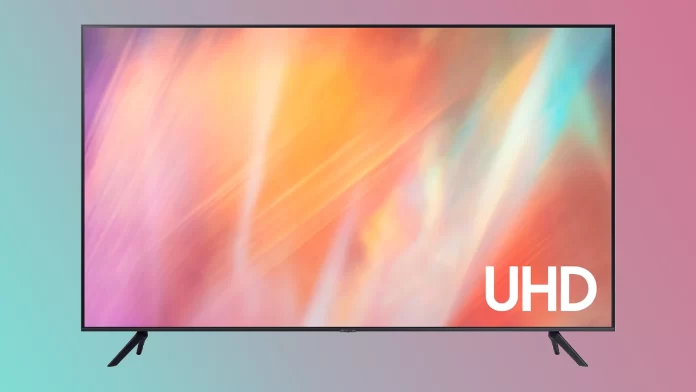
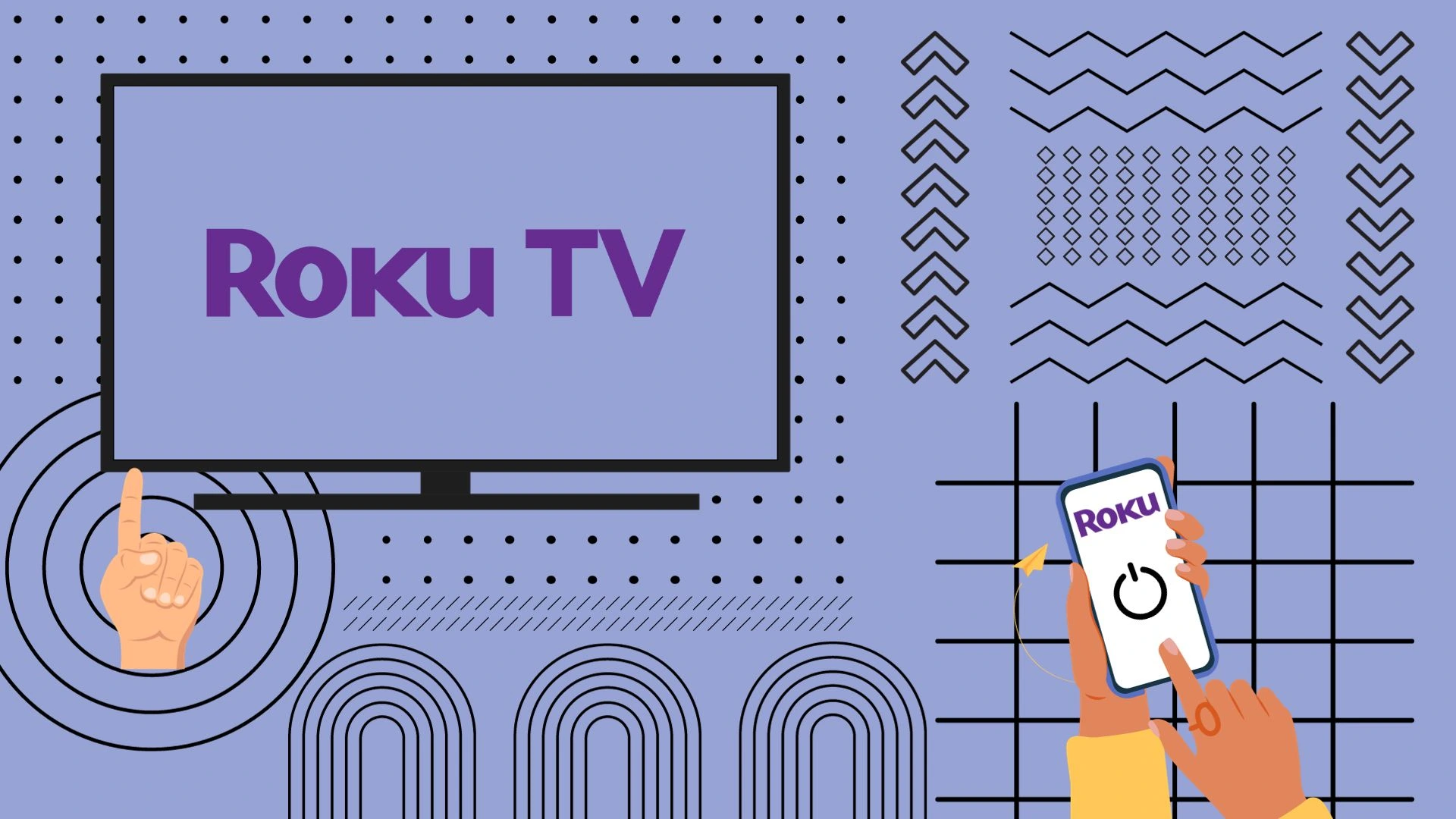
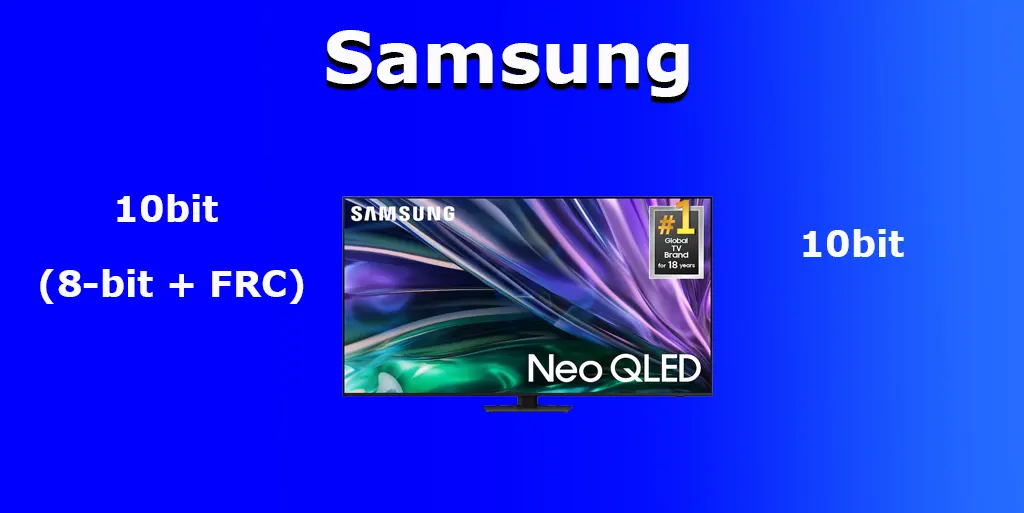

My 58 inch TU7000 series just died after just two years. I’m extremely disappointed. It almost seems like it was planned, since the TV just went in the middle of watching a show. Can I expect the same level of quality in the 8000 series or should I buy a more reliable brand of TV? In which case which brand actually lasts these days. I have a similar sized SONY Bravia much older and apparently not as SMART as to know when to die, since it’s still running except it’s not 4K. Thanks in advance.
It might be easier to have the TV repaired. The leaders in the TV market remain Samsung, LG and Sony. Everything else is made in China. The TU, AU series are budget TV series, they have cheap Chinese screens. Look at the LG QNED series. If you want Samsung, look at the QLED series. Sony is more expensive.